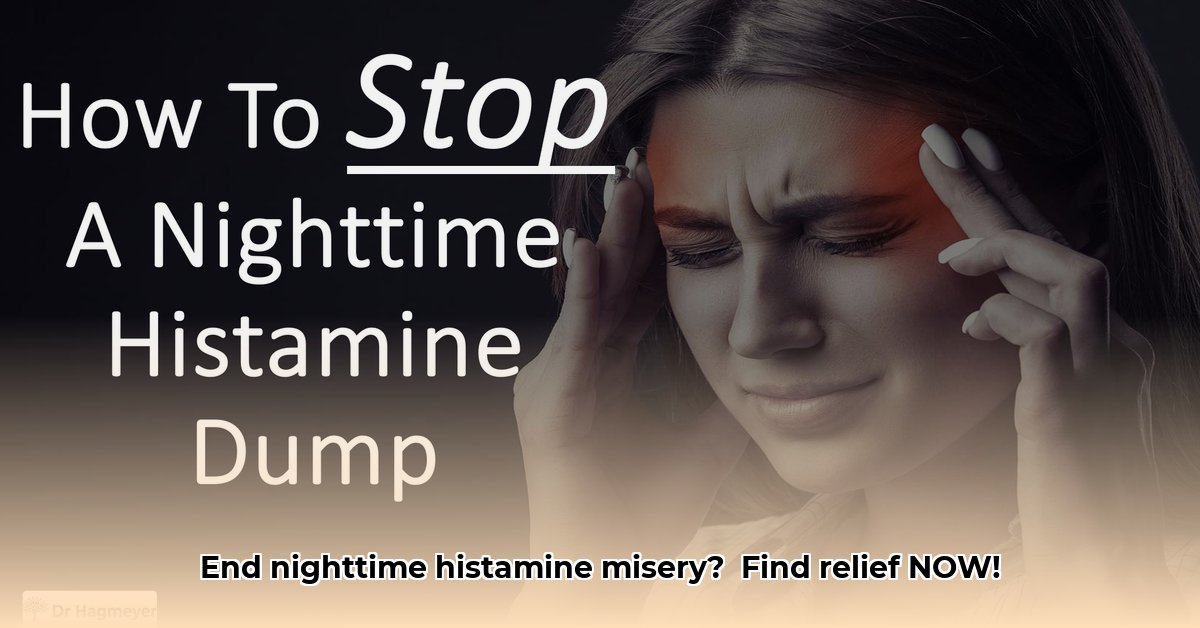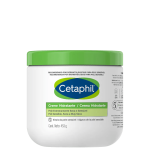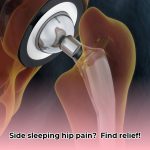Waking up in the middle of the night with itchy skin, a bloated belly, or a racing heart? It could be a histamine dump – a sudden release of histamine in your body that throws your sleep and energy off. This isn’t uncommon for people with histamine intolerance or MCAS (Mast Cell Activation Syndrome), and it’s often frustrating because it’s hard to know what’s causing it, or what to do about it. This guide explains what nighttime histamine dumps are, what might be triggering them, and, most importantly, how to get a better night’s sleep and feel better overall. We’ll cover simple diet changes, better sleep habits, and a plan to manage histamine dumps long-term. Let’s figure out what’s happening and get you some relief.
Understanding and Managing Nighttime Histamine Dump Symptoms
Are you jolted awake at night with an itchy rash, a racing heart, or a rumbling tummy? You might be experiencing a nighttime histamine dump. It’s not fun, but it’s more common than you think, especially if you have histamine intolerance or Mast Cell Activation Syndrome (MCAS). Let’s unravel this nighttime mystery and find some solutions together.
Decoding the Nighttime Histamine Surge: Why Does This Happen?
Histamine is a crucial chemical messenger in your body, involved in immune responses, digestion, and neurological functions. A “histamine dump” is a sudden spike in histamine levels in your bloodstream. Several factors can trigger this surge at night. Your body’s internal clock (your circadian rhythm) plays a role, along with what you eat, your stress levels, and hormonal shifts. It’s a complicated balancing act, and sometimes, things get out of whack.
Another important factor is an enzyme called diamine oxidase (DAO). DAO helps break down histamine in the digestive tract. If your body doesn’t produce enough DAO, histamine lingers, potentially worsening symptoms. Understanding the interplay between these factors is crucial in managing histamine intolerance effectively.
Recognizing the Clues: Spotting a Nighttime Histamine Dump
The signs of a histamine dump at night can vary from person to person. Common symptoms include:
- Itchy Skin and Hives: Often the first noticeable symptom, presenting as an annoying, persistent itch.
- Nasal Congestion or Runny Nose: Histamine can cause swelling in the nasal passages
- Digestive Upset: Bloating, queasiness, cramps, and diarrhea.
- Headaches or Migraines: A throbbing headache can disrupt sleep.
- Racing Heart: Feeling like your heart is pounding unexpectedly.
- Sleep Problems: Insomnia and difficulty staying asleep.
- Flushing: A sudden warmth or redness in your skin, like a sudden hot flash.
- Anxiety or Restlessness: Histamine acts as a stimulant in the central nervous system.
Food Detective Work: Dietary Strategies for Better Nights
Dietary changes are often the first line of defense in managing nighttime histamine dumps. This means identifying and reducing or eliminating high-histamine foods. Keeping a food diary to track what you eat and your subsequent symptoms is helpful.
Here are some common high-histamine foods to consider limiting:
- Aged Cheeses: Cheddar, brie, parmesan, and other aged cheeses.
- Fermented Foods: Sauerkraut, kimchi, kombucha, yogurt, and kefir.
- Alcohol: Especially red wine, beer, and sparkling wine.
- Processed Foods: Often containing additives and preservatives that can exacerbate histamine issues.
- Smoked and Cured Meats: Bacon, sausage, salami, and other cured meats.
- Certain Fruits and Vegetables: Tomatoes, spinach, eggplant, avocados, and citrus fruits.
- Shellfish: Shrimp, lobster, crab, and other shellfish.
- Vinegar-Containing Foods: Pickles, mayonnaise, salad dressings.
- Chocolate: Especially dark chocolate.
Everyone is different, so identifying your specific triggers takes time and patience. Consider an elimination diet under the guidance of a healthcare professional to pinpoint your sensitivities.
Lifestyle Tweaks: Small Changes, Big Impact
Beyond diet, lifestyle changes can significantly impact histamine levels:
-
Stress Management: Chronic stress triggers histamine release. Implement relaxation techniques like yoga, meditation, or deep breathing exercises. Even a short walk in nature can help regulate cortisol levels and reduce histamine response.
-
Prioritize Sleep Hygiene: Establish a consistent sleep schedule, create a relaxing bedtime routine (warm bath, calming music, reading), and ensure your bedroom is dark, quiet, and cool. Aim for 7-9 hours of quality sleep per night.
-
Minimize Allergens: Reduce exposure to allergens like dust mites, pet dander, and pollen. Regular cleaning, using allergen-proof covers on bedding, and using an air purifier with a HEPA filter can help.
-
Hydration: Drink plenty of water throughout the day to support optimal bodily function and histamine metabolism.
-
Gentle Exercise: Regular, moderate exercise can help regulate the immune system and reduce inflammation, but avoid intense workouts close to bedtime.
When to Call in the Experts: Seeking Professional Help
If nighttime histamine dumps severely disrupt your sleep, significantly impact your quality of life, or are accompanied by concerning symptoms (difficulty breathing, severe allergic reactions), consult a doctor or healthcare professional. They can help diagnose underlying conditions, recommend testing (DAO enzyme levels, allergy testing, mast cell activation markers), and suggest personalized treatment plans, including medication, supplements, or specialized diets.
Managing nighttime histamine dumps requires time, patience, and a holistic approach. By working with your doctor and making informed lifestyle adjustments, you can improve your sleep quality and overall well-being.
Managing Nighttime Histamine Dumps with DAO Supplementation
Key Takeaways:
- Nighttime histamine dumps are often linked to insufficient diamine oxidase (DAO) enzyme activity, particularly in the gut.
- DAO supplementation can reduce nighttime histamine symptoms.
- Dietary changes and lifestyle modifications complement DAO supplementation.
- Consulting a healthcare professional is crucial for accurate diagnosis and personalized treatment plans.
Understanding Nighttime Histamine Buildup
Do you often wake up feeling itchy, with a racing heart, or digestive upset? These could be signs of a nighttime histamine dump caused by the accumulation of unmetabolized histamine. Histamine builds up when your body struggles to break it down efficiently, often due to low levels of the DAO enzyme in the gut. Nighttime can be particularly challenging because several factors converge, including circadian rhythm effects, potential allergen exposure in the sleep environment, and slower digestive processes during sleep.
The Role of DAO in Histamine Metabolism
Diamine oxidase (DAO) is an enzyme primarily found in the intestinal lining and kidneys. Its primary function is to break down ingested histamine, preventing it from entering the bloodstream and triggering systemic reactions. When DAO levels are insufficient, histamine accumulates, leading to a range of symptoms. This enzyme deficiency is more common in individuals with gastrointestinal disorders, genetic predispositions, or those taking certain medications.
Step-by-Step Guide to DAO Supplementation
-
Consult Your Doctor: Before starting any new supplement, especially if you have underlying health conditions, consult your doctor or a qualified healthcare professional. They can assess your individual needs, rule out contraindications, and advise on appropriate dosage and potential interactions with other medications.
-
Choose a Reputable Supplement: Select a high-quality DAO supplement from a reputable brand that undergoes third-party testing for purity and potency. Look for supplements that contain a standardized amount of DAO per serving.
-
Start with a Low Dose: Begin with the lowest recommended dose of DAO (typically around 10,000 HDU) and gradually increase it as tolerated, based on your symptoms and your doctor’s guidance.
-
Take DAO Before Meals: For optimal effectiveness, take DAO supplements 10-15 minutes before meals, particularly those that are likely to contain histamine or histamine liberators. This allows the enzyme to be present in the digestive tract when histamine is introduced. Some brands suggest opening the capsule and sprinkling it on your food.
-
Monitor Symptoms: Keep a detailed record of your symptoms and their correlation to DAO supplementation. Note any improvements, side effects, or lack of response. If you experience any adverse effects, such as nausea, abdominal discomfort, or headaches, reduce the dosage or discontinue use and consult your healthcare provider.
-
Combine with Dietary Changes: DAO supplementation is most effective when combined with a low-histamine diet. Eliminating or significantly reducing the intake of high-histamine foods can reduce the overall histamine load and improve symptom control.
-
Lifestyle Adjustments: Stress and poor sleep can exacerbate histamine intolerance. Prioritizing stress management techniques (mindfulness, yoga, meditation) and maintaining good sleep hygiene are important components of managing your symptoms long-term.
Complementary Strategies
While DAO supplementation is a valuable tool, it’s crucial to adopt a comprehensive approach that addresses the underlying causes of histamine intolerance:
- Low-Histamine Diet: This involves limiting or eliminating high-histamine foods and focusing on fresh, whole, unprocessed foods.
- Gut Health Support: Address any underlying gut issues, such as leaky gut, SIBO (small intestinal bacterial overgrowth), or dysbiosis. Consider working with a healthcare professional to optimize gut health through dietary changes, probiotics, or other targeted therapies.
- Nutrient Optimization: Ensure adequate intake of nutrients that support DAO activity
- Unlock Young Doctors’ Work-Life Balance: Actionable Strategies Now - December 2, 2025
- Unlock Life Harmony: Work-Life Integration Guide - November 30, 2025
- Unlock Work-Life Harmony:Your Guide to Integration - November 27, 2025
















